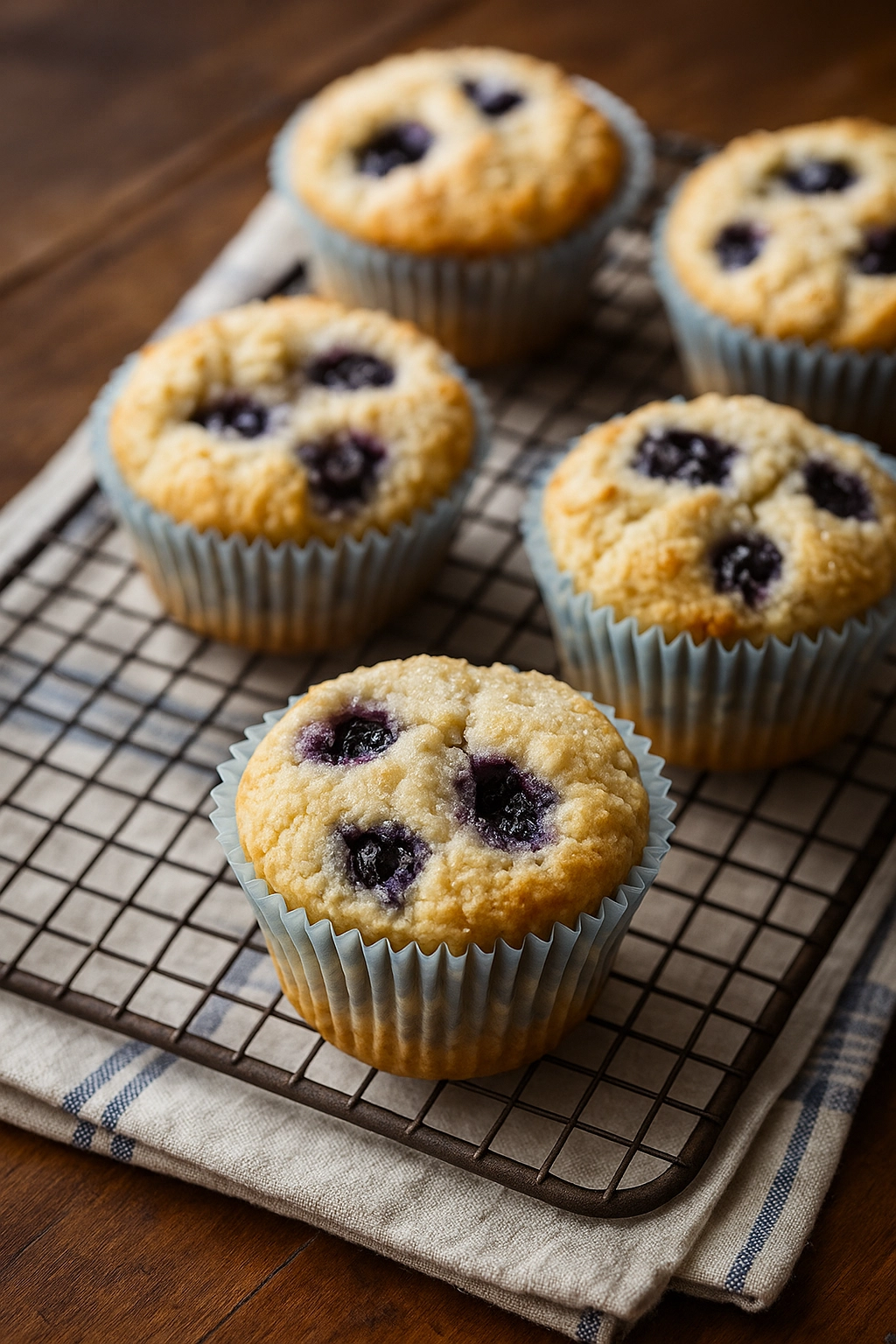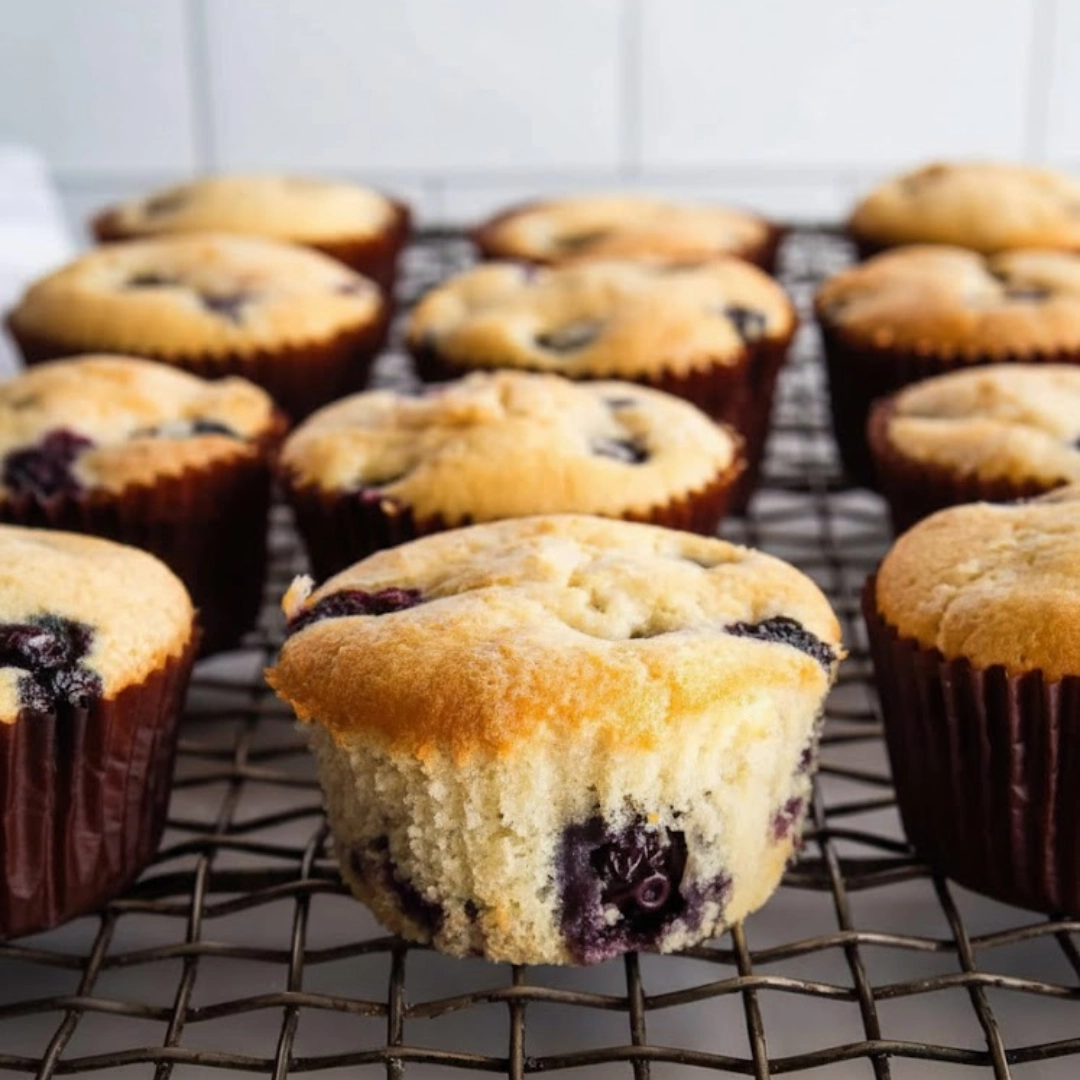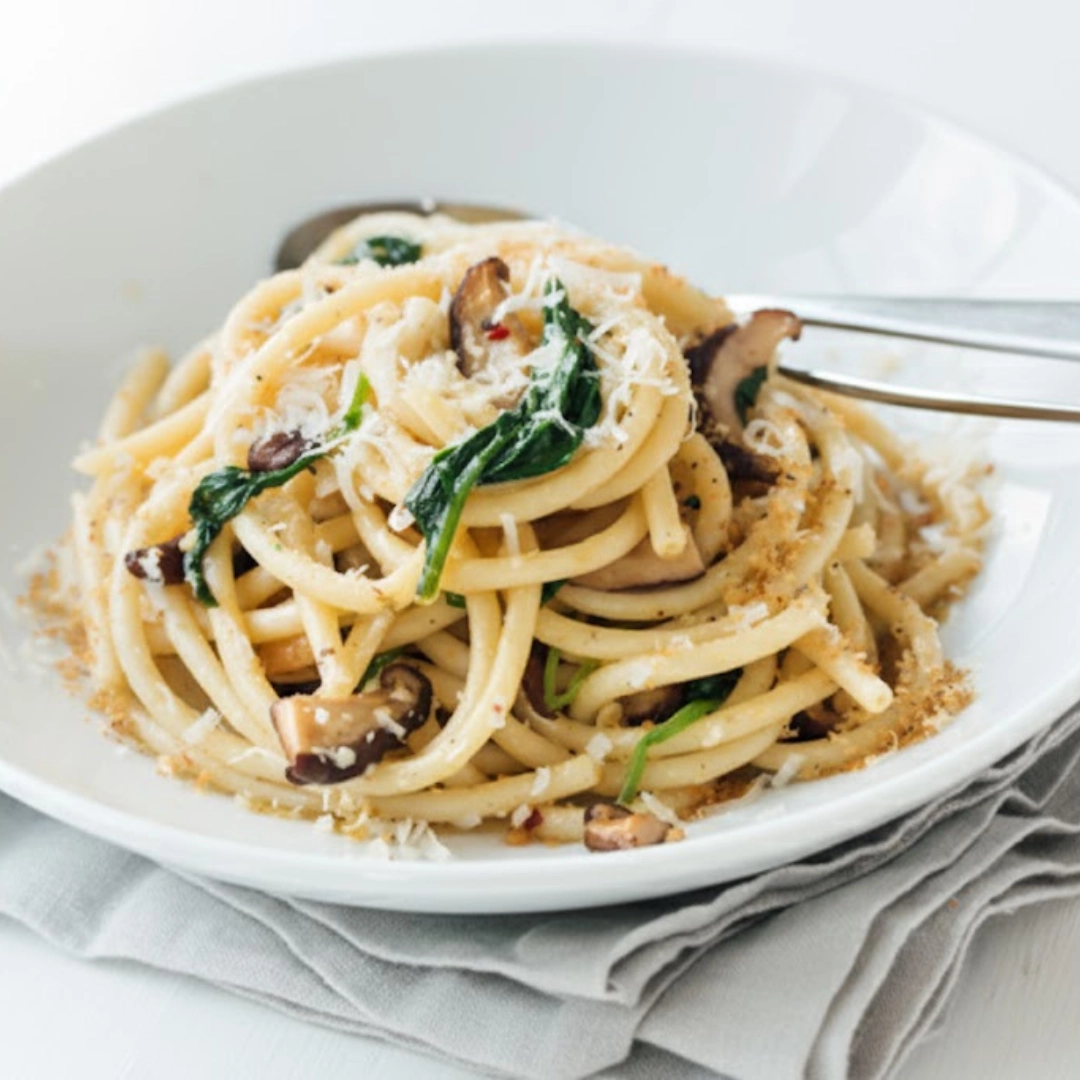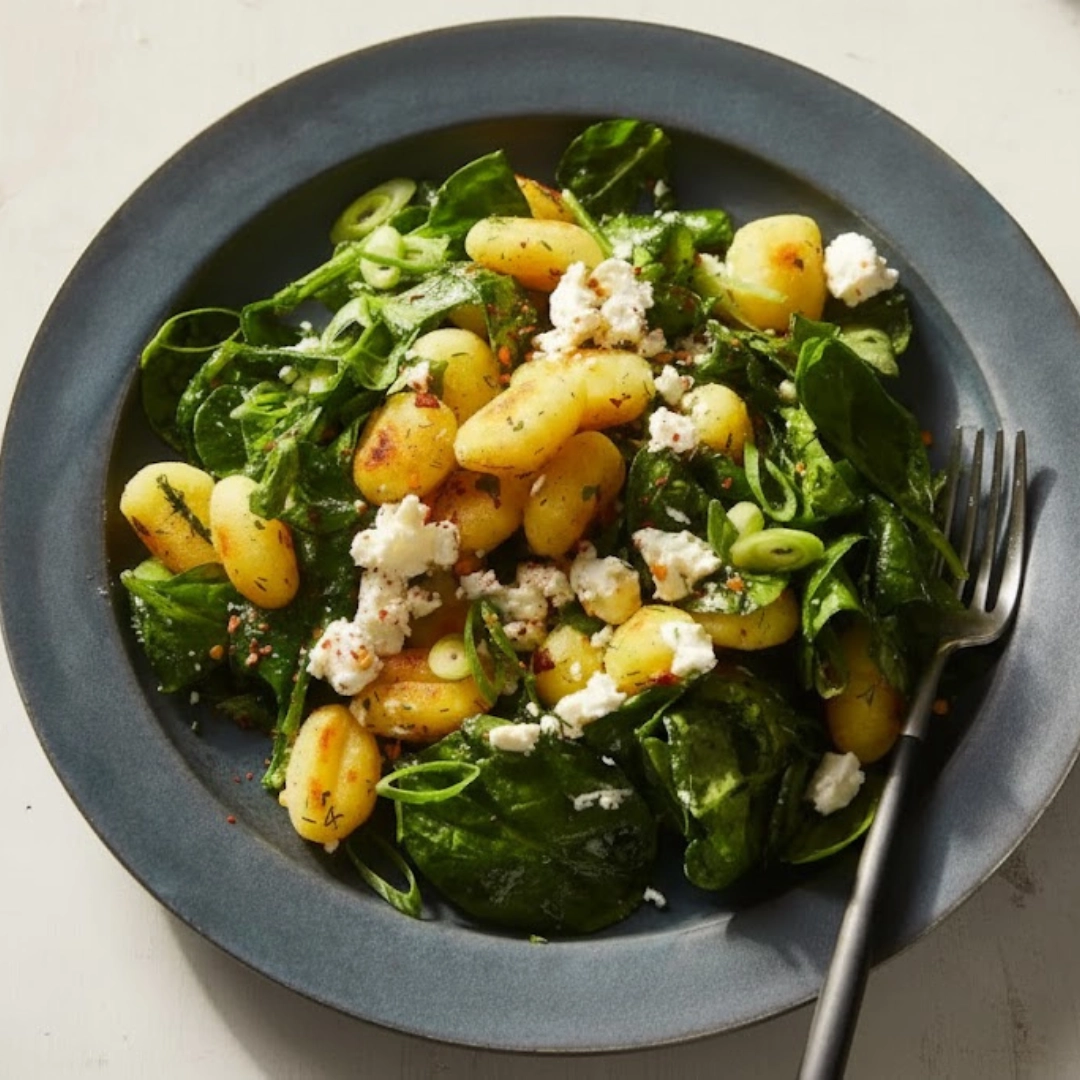I still remember the first time I baked a batch of gluten-free blueberry muffins for my family. It was a chilly Sunday morning, and my daughter had just been diagnosed with gluten sensitivity. Determined not to let her miss out on our beloved weekend muffin ritual, I set out to recreate the soft, bakery-style muffins we all loved only this time, gluten-free. After several rounds of testing (and a few flat, dense attempts), I finally found the perfect balance of fluffy texture, golden tops, and bursting blueberries.
What makes this recipe special is its reliability and versatility. Whether you’re using a trusted gluten-free flour blend or prefer wholesome almond flour, these muffins bake up tender, moist, and full of flavor. They’re quick to prepare, freezer-friendly, and make your kitchen smell like a cozy bakery.
Over the years, I’ve refined this recipe for both everyday breakfasts and special brunches. After baking it countless times sometimes alongside a batch of Gluten-Free Naan Bread or Crispy Oven-Baked Chicken for a full meal I can confidently say these muffins never disappoint. Whether you’re new to gluten-free baking or a seasoned pro, this recipe will quickly become a household favorite.
Table of Contents
Why You’ll Love These Gluten-Free Blueberry Muffins
After testing this recipe over a dozen times, I’ve found that the right combination of ingredients and baking method makes all the difference. These gluten-free blueberry muffins deliver bakery-style results at home—moist centers, golden tops, and a burst of blueberry flavor in every bite.
Here’s what makes them so special:
- Perfectly fluffy and light: The mix of eggs, butter, and just the right gluten-free flour blend gives these muffins a soft crumb instead of the dense texture that’s common in gluten-free baking.
- Loaded with juicy blueberries: Whether you use fresh or frozen berries, each muffin is packed with fruit that stays plump and sweet.
- Customizable with almond flour: For a slightly nuttier, heartier flavor, you can swap part of the flour blend for almond flour without sacrificing structure.
- Simple, one-bowl method: You’ll only need basic ingredients and minimal cleanup ideal for busy mornings.
- Freezer-friendly and portable: These muffins store beautifully, making them perfect for meal prep or grab-and-go breakfasts.
- Tested and trusted: This recipe has been refined to ensure consistent results, whether you’re baking at sea level or in a higher-altitude kitchen.
If you love recipes that are wholesome, easy, and full of fresh flavor, these muffins will fit right into your regular baking routine.
Ingredients You’ll Need
Before you start mixing, gather all your ingredients. The beauty of these gluten-free blueberry muffins is how simple and adaptable they are every ingredient plays a role in achieving that light, moist, bakery-style texture.
Key Ingredients Explained
- Gluten-Free Flour Blend:
I recommend a 1-to-1 gluten-free baking flour that includes xanthan gum for structure (such as Bob’s Red Mill). The xanthan gum helps mimic the elasticity of wheat flour, preventing crumbly muffins. - Almond Flour (for variation):
For a nuttier, slightly denser texture, replace 1 cup of gluten-free flour blend with 1 cup of finely blanched almond flour. This variation adds moisture and a gentle richness. - Blueberries:
Fresh or frozen both work beautifully. Wild blueberries are smaller and pack more flavor per bite. If using frozen, do not thaw before adding they mix best when frozen. - Butter:
Softened unsalted butter creates a tender crumb and rich flavor. For dairy-free muffins, substitute with coconut oil or vegan butter. - Granulated Sugar:
Provides sweetness and tenderness. Avoid replacing it with liquid sweeteners like honey or maple syrup, as that can affect texture. - Eggs:
Two large eggs help the muffins rise and bind together. For an egg-free version, use flax eggs (1 tablespoon flaxseed meal + 3 tablespoons water per egg). - Milk:
Whole milk yields the richest flavor, but any milk works including almond or oat milk for a dairy-free version. - Vanilla Extract:
Balances the tartness of blueberries and adds a bakery-style aroma. - Baking Powder & Salt:
These leavening agents help the muffins rise evenly while enhancing flavor balance.
Ingredient Substitutions and Tips
- Dairy-Free Option: Use vegan butter and non-dairy milk.
- Lower Sugar Option: Reduce sugar by ¼ cup or use a 1:1 sugar alternative like allulose.
- Extra Crunch: Sprinkle coarse sugar or chopped almonds on top before baking.
- Citrus Twist: Add 1 teaspoon lemon zest to brighten the flavor.
If you enjoy creative, allergy-friendly baking, you might also love my Baked Apple Pie Rice Paper Rolls another gluten-free treat that’s light yet satisfying.
Step-by-Step: How to Make Gluten-Free Blueberry Muffins
Making these gluten-free blueberry muffins is simple and rewarding. Follow these steps for soft, fluffy results every time.
Prepare the Batter
Preheat your oven to 350°F (175°C). Line a muffin tin with paper liners or lightly grease it.
In a medium bowl, whisk together your gluten-free flour blend, baking powder, and salt. Set aside.
In a large mixing bowl, beat the softened butter and sugar until light and creamy this traps air and helps your muffins rise beautifully. Add the eggs one at a time, mixing well after each addition, followed by the vanilla extract.
Combine the Dry and Wet Ingredients
Gradually add the dry flour mixture to the butter mixture. The batter will be thick at this stage. Pour in the milk and mix until smooth and creamy, but do not overmix, as that can make the muffins dense.

Fold in Blueberries
Gently fold in the blueberries using a spatula. If using frozen berries, mix them straight from the freezer to avoid streaky batter. For even berry distribution, spoon a tablespoon of plain batter into each muffin cup before folding the berries into the rest of the batter. This keeps the fruit from sinking.
Fill and Bake
Scoop the batter evenly into the muffin cups, filling each about two-thirds full. For an extra golden crust, sprinkle a pinch of sugar on top of each muffin.
Bake for 22–25 minutes, or until a toothpick inserted in the center comes out clean and the tops are lightly golden.
Cool and Serve
Let the muffins cool in the pan for 5 minutes, then transfer them to a wire rack. This prevents the bottoms from becoming soggy. Once cooled, enjoy them warm with butter or jam, or serve as a quick breakfast alongside Cashew Creamy Cajun Chicken Pasta for a cozy weekend brunch.
Almond Flour Blueberry Muffin Variation
If you love the flavor of almonds or prefer a naturally grain-free option, this almond flour version of gluten-free blueberry muffins is a must-try. After many rounds of testing, I found the perfect ratio that delivers a moist, tender crumb without becoming heavy or oily something that can happen easily when baking solely with nut flours.
Ingredient Adjustments
To make this version, replace 1 cup of the gluten-free flour blend with 1 cup of finely blanched almond flour. This substitution keeps the structure strong while adding a lovely, nutty aroma and extra moisture.
If you want to go fully grain-free, you can use 2 cups of almond flour and skip the gluten-free blend, but add:
- ½ teaspoon xanthan gum for structure
- 1 tablespoon tapioca flour or cornstarch for lightness
Texture and Flavor Notes
Almond flour muffins bake up slightly denser but incredibly rich and tender. They stay moist for days and brown beautifully around the edges. Because almond flour contains natural oils, reduce the butter slightly (to 6 tablespoons instead of ½ cup) for a balanced crumb.
Baking Time
When using almond flour, bake at 350°F (175°C) for 20–23 minutes. Keep an eye on them near the end; almond flour browns faster than traditional gluten-free blends.
Serving Idea
These muffins pair wonderfully with fresh fruit or a drizzle of honey. For a complete gluten-free breakfast, serve them alongside Gluten-Free Naan Bread and a cup of hot tea.
Expert Baking Tips
After years of testing different gluten-free recipes, I’ve learned that small adjustments make a huge difference. Here’s how to make sure your gluten-free blueberry muffins turn out perfectly every single time.
Measure Accurately
Use a kitchen scale if possible. Gluten-free flours vary in density, and scooping directly from the bag can pack in too much flour, leading to dry muffins. If using measuring cups, fluff the flour first, then spoon and level it gently.
Don’t Overmix
Once you add the dry ingredients, mix just until combined. Overmixing can overwork the xanthan gum or starches, resulting in gummy muffins. Stop as soon as you don’t see streaks of flour.
Adjust for Your Oven
Every oven runs a little differently. Start checking for doneness at 20 minutes by inserting a toothpick into the center if it comes out clean or with a few moist crumbs, they’re ready. If the tops are browning too quickly, tent lightly with foil during the last 5 minutes.
Use Room Temperature Ingredients
Cold eggs or milk can cause uneven mixing and affect texture. Let your butter, eggs, and milk sit at room temperature for 10–15 minutes before baking.
Keep Blueberries from Sinking
Instead of tossing blueberries in flour, try spooning a tablespoon of plain batter into each muffin cup before adding the blueberries to the rest. This creates a soft base layer that prevents the fruit from sinking to the bottom.
Make Ahead and Freeze
These muffins freeze beautifully. Bake, cool completely, then freeze in an airtight bag for up to two months. To reheat, microwave for 15–20 seconds or warm in the oven at 300°F (150°C) for 5 minutes.
Common Mistakes & Fixes
Even experienced bakers run into a few hiccups when making gluten-free blueberry muffins. Here’s a list of common issues and how to fix them based on what I’ve learned through many batches of testing.
Muffins Turn Out Dry
Cause: Too much flour or overbaking.
Fix: Measure your flour carefully, and remove the muffins from the oven as soon as a toothpick comes out clean. To restore moisture, brush the tops with a little melted butter right after baking.
Muffins Are Dense or Gummy
Cause: Overmixing or using the wrong flour blend.
Fix: Mix the batter only until the dry ingredients disappear. Always use a 1-to-1 gluten-free baking flour with xanthan gum, or add ½ teaspoon yourself if your blend doesn’t include it.
Blueberries Sink to the Bottom
Cause: The batter is too thin or the berries were thawed.
Fix: Add frozen blueberries directly into the batter, and use the “bottom layer trick” spoon a tablespoon of plain batter into each muffin cup before folding in the berries.
Muffins Turn Purple
Cause: Overmixing frozen blueberries.
Fix: Fold the berries in gently and briefly. Some color bleeding is normal and gives a lovely homemade look, but too much can turn the batter grayish.

Muffins Stick to the Liners
Cause: Low-fat batter or low-quality liners.
Fix: Use parchment paper liners or lightly spray the inside of the liners before filling. Muffins made with whole milk or a touch of almond flour also release more easily.
Muffins Didn’t Rise Enough
Cause: Expired baking powder or overfilled cups.
Fix: Always check that your baking powder is fresh (it should fizz in water). Fill muffin cups two-thirds full for a perfect dome.
Storage and Freezing Tips
One of the best parts about these gluten-free blueberry muffins is how well they keep their soft, fresh texture even days after baking. Whether you’re meal-prepping for the week or saving extras for later, proper storage ensures they stay moist and flavorful.
Room Temperature Storage
Once the muffins have cooled completely, place them in an airtight container lined with paper towels to absorb any excess moisture. Store them at room temperature for up to 3 days. Avoid sealing them while they’re still warm; trapped steam can make them soggy.
Refrigerator Storage
If your kitchen is warm or humid, refrigerate the muffins in an airtight container for up to 5 days. Before eating, warm them slightly in the microwave for 10–15 seconds or in a 300°F (150°C) oven for 5 minutes to restore their softness.
Freezer Storage
For longer storage, these muffins freeze beautifully.
- Arrange cooled muffins on a baking sheet and freeze until solid (about 1 hour).
- Transfer them to a freezer-safe bag or container, removing as much air as possible.
- Label with the date and store for up to 2 months.
When ready to enjoy, thaw muffins at room temperature for 1–2 hours, or gently warm them in the oven. If you’re short on time, microwave one frozen muffin on a low setting for about 20 seconds.
Pro Tip
If you baked both the regular and almond flour versions, wrap each type separately the almond flour muffins retain more natural oils and can soften other varieties if stored together.
Serving Suggestions
These gluten-free blueberry muffins are wonderfully versatile perfect for breakfast, brunch, or an afternoon treat. Their light, buttery texture and burst of berries make them easy to pair with both sweet and savory dishes.
Breakfast & Brunch Pairings
Serve the muffins warm with a pat of butter or a drizzle of honey. For a complete gluten-free breakfast spread, pair them with Gluten-Free Naan Bread and fresh fruit. If you prefer a heartier morning meal, add a savory side like Crispy Oven-Baked Chicken or scrambled eggs.

Dessert Ideas
Turn these muffins into a comforting dessert by serving them with whipped cream, vanilla yogurt, or a dollop of lemon curd. For an elegant gluten-free finale, enjoy them alongside Baked Apple Pie Rice Paper Rolls and hot tea.
On-the-Go Snack
These muffins travel beautifully. Wrap them individually and keep them in your bag or lunchbox for a wholesome mid-day snack. They hold up well without refrigeration for several hours.
Final Thoughts
There’s something timeless about a warm batch of homemade gluten-free blueberry muffins the golden tops, the burst of berries, and that nostalgic aroma filling your kitchen. Whether you’re baking for your family, meal prepping for the week, or trying gluten-free baking for the first time, this recipe is designed to be foolproof and full of flavor.
I’ve tested these muffins countless times, both with gluten-free flour blends and almond flour, to make sure you can count on them every time. They’re soft, fluffy, and perfectly sweet proof that gluten-free baking doesn’t mean compromising on texture or taste.
Enjoy them fresh from the oven with a pat of butter, or freeze a few for busy mornings. Once you’ve mastered these, you might also love exploring other comforting, gluten-free favorites like Crispy Oven-Baked Chicken or Baked Apple Pie Rice Paper Rolls.
Follow us in Pinterest.
FAQs about Gluten-Free Blueberry Muffins
1. Can I use almond flour instead of a gluten-free blend?
Yes, you can substitute part or all of the gluten-free flour blend with almond flour. For best results, replace 1 cup of gluten-free flour with 1 cup of finely blanched almond flour. If using all almond flour, add ½ teaspoon xanthan gum and 1 tablespoon tapioca flour to help the muffins hold their shape.
2. How do I make my muffins rise higher?
Ensure your baking powder is fresh, and fill muffin cups two-thirds full no more, no less. Starting the oven slightly hotter at 375°F (190°C) for the first 5 minutes, then lowering to 350°F (175°C), also helps create a beautiful dome.
3. Can I use frozen blueberries?
Absolutely. There’s no need to thaw them. Just add frozen berries directly to the batter to prevent discoloration and excess moisture. The muffins will bake perfectly with plump, juicy blueberries.
4. Why did my muffin batter turn purple?
This happens when frozen berries are overmixed or partially thawed before baking. Fold them in gently and quickly—some natural color swirl is normal and even adds a rustic, homemade look.
Gluten-Free Blueberry Muffins (with Almond Flour Option)
These soft and fluffy gluten-free blueberry muffins are loaded with juicy blueberries and can be made with a gluten-free flour blend or almond flour for a moist, bakery-style treat.
- Prep Time: 15 mins
- Cook Time: 25 mins
- Total Time: 40 mins
- Yield: 12 muffins 1x
- Category: Breakfast
- Method: Baking
- Cuisine: American
Ingredients
2 cups gluten-free flour blend (1-to-1 baking flour with xanthan gum)
2 teaspoons baking powder
1/2 teaspoon salt
1/2 cup unsalted butter, softened
3/4 cup granulated sugar
2 large eggs
1 teaspoon vanilla extract
1/2 cup milk (any type)
2 cups blueberries (fresh or frozen)
1/4 cup granulated sugar for topping (optional)
Instructions
1. Preheat oven to 350°F (175°C). Line or grease a muffin tin.
2. Whisk together gluten-free flour, baking powder, and salt.
3. Beat softened butter and sugar until creamy. Add eggs and vanilla, mixing until smooth.
4. Add dry ingredients alternately with milk, mixing gently until combined.
5. Fold in blueberries with a spatula.
6. Scoop batter into muffin cups, filling each about two-thirds full. Sprinkle sugar on top if desired.
7. Bake 22–25 minutes or until a toothpick comes out clean.
8. Cool muffins in pan for 5 minutes, then transfer to a rack to cool completely.
Notes
Use a 1-to-1 gluten-free flour blend with xanthan gum for best results.
For a nutty variation, replace 1 cup of flour with 1 cup of almond flour.
Store at room temperature for 3 days or freeze up to 2 months.
This recipe makes 12 muffins.
Nutrition
- Serving Size: 1 muffin
- Calories: 185
- Sugar: 13g
- Sodium: 170mg
- Fat: 8g
- Saturated Fat: 5g
- Unsaturated Fat: 2g
- Trans Fat: 0g
- Carbohydrates: 24g
- Fiber: 2g
- Protein: 4g
- Cholesterol: 55mg















